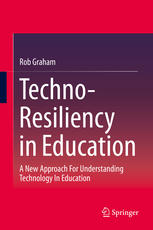

Most ebook files are in PDF format, so you can easily read them using various software such as Foxit Reader or directly on the Google Chrome browser.
Some ebook files are released by publishers in other formats such as .awz, .mobi, .epub, .fb2, etc. You may need to install specific software to read these formats on mobile/PC, such as Calibre.
Please read the tutorial at this link: https://ebookbell.com/faq
We offer FREE conversion to the popular formats you request; however, this may take some time. Therefore, right after payment, please email us, and we will try to provide the service as quickly as possible.
For some exceptional file formats or broken links (if any), please refrain from opening any disputes. Instead, email us first, and we will try to assist within a maximum of 6 hours.
EbookBell Team

4.3
8 reviewsThis book formulates a greater understanding of how to enable a capacity for building social professional practice related to technology-enriched teaching and learning (TETL) specific, but not limited to, educational settings. This book comes at a time when many in education are struggling to provide a technology enriched learning experience for students who are entering classrooms with high expectations for such an experience. The focus on the protective factors and identified resilient professional practices, instead of on well documented and commonly cited risk factors and barriers that impede the effective integration of TETL, represents a distinguishing feature of this work. By attempting to better understand and document how two schools that were classified as resilient in their use of technology have been able to overcome risk factors (e.g., budgetary constraints, a lack of resources, a lack of training, technological support issues), this book will offer the unique concept of techno-resiliency and some of its deeper insights and strategies.